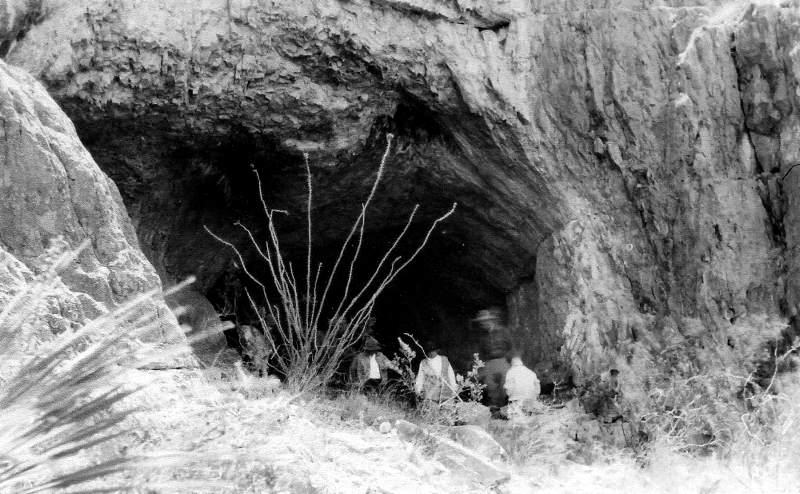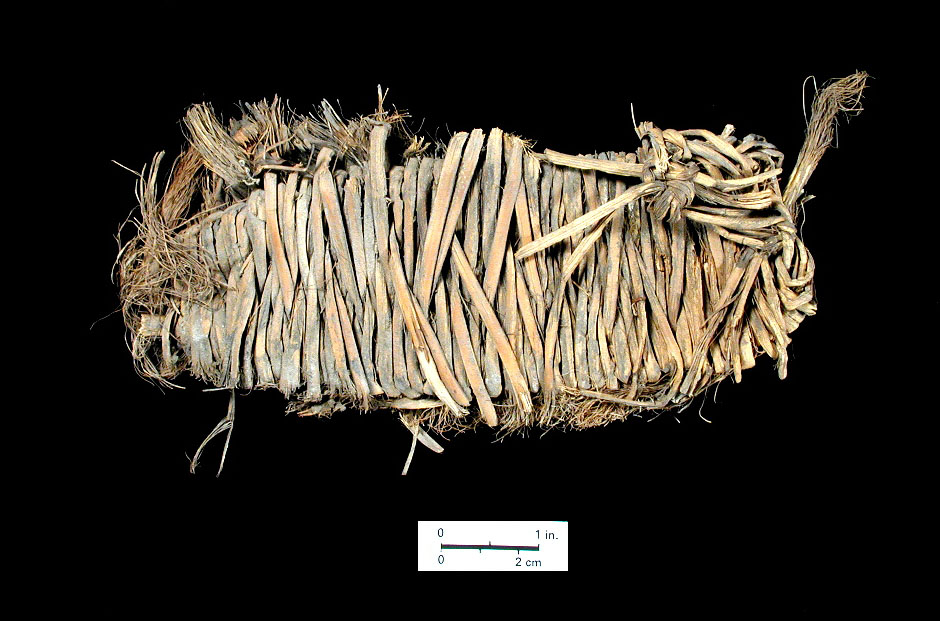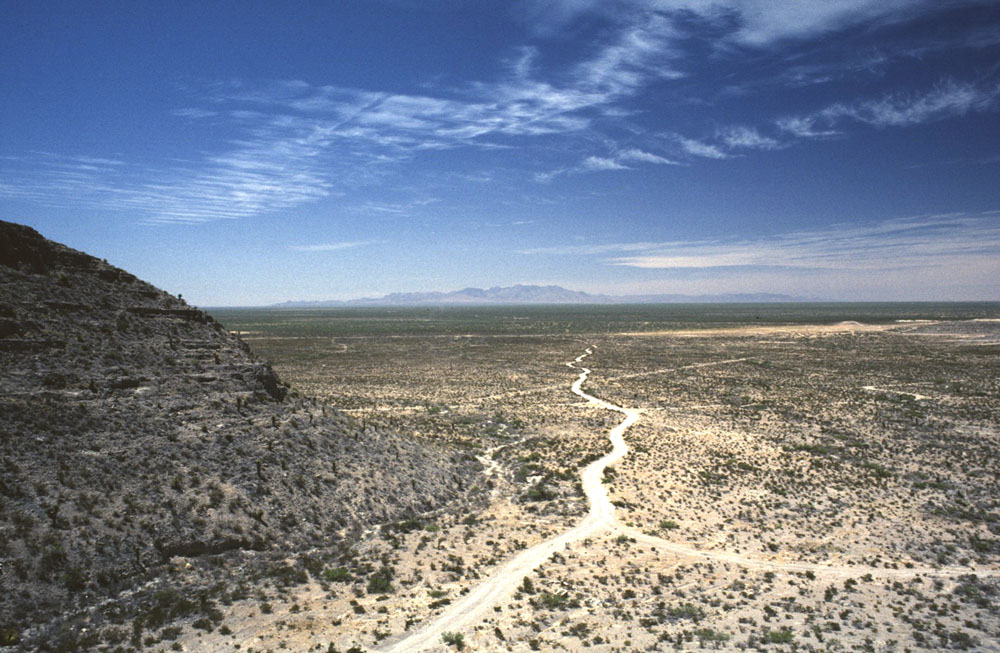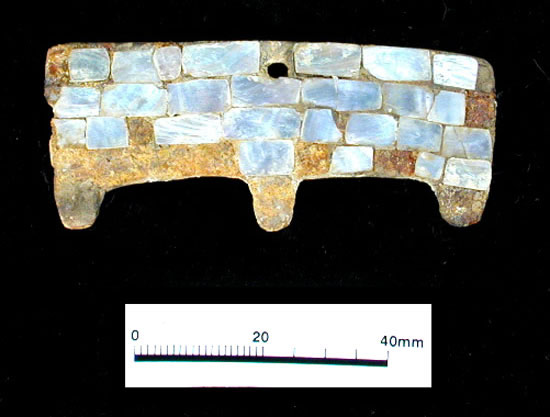Ceremonial Cave stands out as one of the most
unusual and interesting sites ever found in Texas, but its
story is surely one of the most tragic examples of archeological
site destruction in the state. On seeing the cave in the late
1920s, area resident Eileen Alves lamented: "Treasure
hunters of the most malignant and energetic type have reduced
the interior to a state of chaos." Fortunately, Alves
and her husband Burrow Alves purchased some of the looters'
collection, saving it from dispersal and ultimate destruction,
for it is only as a group that the objects begin to convey
their full significance. And fortunately, their alert to the
archeological community prompted an investigation of the site
before it was destroyed.
In 1928, the Alves invited archeologists C.B.
and H.S. Cosgrove to explore the site. At that time many museums
across the country were conducting fieldwork with the intent
of adding to their collection exhibits. Representing Harvard's
Peabody Museum, the Cosgroves were working nearby in the Mimbres
area of southwestern New Mexico, exploring Pueblo ruins and
what they believed to be the cultural remains of the earlier
Basketmaker culture. The dry caves of the Hueco Mountains
presented the possibility of finding perishable materials
of similar cultural affiliation-basketry, clothing, and other
items not commonly preserved in unsheltered sites.
The report of explorations by C.B. Cosgrove
published in 1947 provides us the bulk of the limited documentation
that exists of the deposits at Ceremonial Cave. Because the
deposits were already severely disturbed at the time of their
investigations, it is likely we will never have a better understanding
of the cave than what they observed. From their exploration,
we learn of the remarkable objects found in the cave, but
we also puzzle along with Cosgrove at the combination of certain
artifacts and what their significance might be. There is an
astonishing and diverse group of objects that are probably
offerings, along with hundreds of fiber sandals, some embedded
with cactus thorns. There was a puzzling layer of grass on
the floor of the cave. There were the skeletons of a woman
and a child, carefully placed in a cave niche. And throughout
the cave deposits, in the same chamber containing ceremonial
offerings, were quantities of desiccated human excrement.
Cosgroves' 1928 map of the cave shows the main
chamber as well as drifts, or extensions, as they appeared
at the time, and denotes the area near the mouth of the cave
where a great many ceremonial objects were found. Unfortunately,
there is little documentation of the ceremonial deposit, although
Cosgrove specifically mentions prayer sticks or ceremonial
staffs (yucca stalks with attached fiber bolls), darts, and
so-called hair ornaments. Given the nature of the early looting,
it is likely that the ornaments and tablitas and certain other
items purchased by the Alves were from the ceremonial deposits
as well. Although a number of dart shafts were found in the
rear portion of the main chamber, it is possible those were
carried to the back by rodents; indeed, several shafts show
signs of gnawing
In addition to the remarkable array of artifacts,
the Cosgroves found the skeletal remains of two individuals,
a young child about 2 ½-years old, and a young woman.
Although their bones had been scattered by animals, it was
evident that the woman had been placed in a bay on the side
of the cave, her legs drawn up, and head facing south. She
had been adorned with jewelry-—a shell pendant and a
necklace of seeds-—but there were chipped stone projectile
points within her body as well, one in her pelvic cavity and
another on the right side of her body. Whether these attest
to her violent death—or were placed there for some other,
more-peaceful reason—is not known. We do know, however,
that at her death she was carefully wrapped in a blanket of
rabbit skin strips. Cosgrove believed the blanket was an early
type, associated with the so-called Basketmaker culture.
Cosgrove's interpretation of the cave deposits
and the placement of artifacts is important. He notes the
absence of fire pits or ash strata that would indicate it
might have been used as a dwelling or that might indicate
it was occupied for an extended period of time. One enigmatic
feature—a layer of packed grass lying directly on the
cave floor and burned to ash in some places—indicates
a stay of some sort. Cosgrove believed it was bedding for
transient visitors, and its burned state an indication that
it was carelessly fired.
Another curious finding was an enormous quantity
of desiccated human excrement, or coprolites, throughout the
cave. Unfortunately Cosgrove and subsequent investigators
failed to collect any of the coprolites, which could have
provided valuable information on the diet of the cave visitors
as well as age of the deposits.
In his report, Cosgrove sums up his interpretations:
"A shrine it appears to be, with a suggested curious
custom of the purging of the bowels and leaving of worn-out
sandals when the objects were deposited there as offerings."
However, some investigators today hold a different interpretation:
that is, both the coprolites and the large numbers of sandals
may be attributable to earlier occupations at the site. Given
that almost all of the cave was dug up, the large quantities
of these items are more likely a function of large-scale sampling.
Several other investigators visited and, in
some cases, conducted excavations at Ceremonial Cave, adding
a number of artifacts to the collections and raising additional questions about the deposits. Among these was E.B. Sayles, who in 1931 visited
the cave and conducted limited testing in the rear of the
main chamber. He reported what he termed a "grass mat"
as well as a concentration of charcoal and ashes, yucca-leaf
sandals, cordage, bone awls, and the bone of an extinct antelope
dating to the late Pleistocene. (Bones of other extinct animals
were also found by the Cosgroves and probably reflect use
of the cave by Pleistocene animals.)
Today, Ceremonial Cave is encompassed within
the bounds of Fort Bliss. When archeologists from The University
of Texas at El Paso surveyed the area and its caves for the
United States Army Air Defense Artillery Center in 1997, they
noted that there was almost nothing left in the cave. For a more detailed summary of investigations at Ceremonial
Cave, download a pdf
version of the report prepared in conjunction
with the UTEP Survey report.
|
|
Treasure hunters of the most malignant and energetic
type have reduced the interior to a state of chaos.
Eileen Alves, 1931. |

Excavations in progress at what is thought to be Ceremonial Cave. Photo by Jim Alexander, courtesy of Richard D. Worthington and El Paso County Historical Society. 
|

Plan map of Ceremonial Cave and Caves
1-3, as recorded by C. B. Cosgrove in 1928. Cosgrove
identified the faintly circled area (d) in Ceremonial
Cave as "area of large ceremonial deposit."
The small chamber marked as "c"denotes the
area of an adult burial. Map from Cosgrove 1947.  |

Closeup of dart or stalk pajo, or
prayer stick, reported by C.B. Cosgrove from Ceremonial
Cave, circa 1928 (enlarge for full image). The atlatl
darts are shown with attached fiber bolls which were
filled with tobacco. The pajos were made of sotol bloom
stalks. The specimen at left is roughly 20 inches
long; the originals would have been much longer. Image
from Cosgrove 1947. Enlarge to see more examples.  |
A mother-of-pearl ornament, its shell
material derived from the Pacific Coast hundreds of
miles away, was likely a prized trade object. Based on its similarity to rock art depictions at nearby Hueco Tanks and other sites, it may have been a mask, possibly a miniature version. TARL Collections. Photo by Milton Bell.  |

One of the hundreds of "scuffer toe" sandals found
in Ceremonial Cave. Their numbers prompted Cosgrove
to suggest that they were the shoes of the pilgrims
themselves. TARL Collections. Photo by Milton Bell.  |
|





